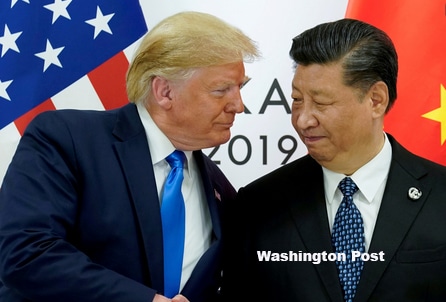The new US-China phase 1 agreement commits China to buy an additional $200 billion of US goods and services during 2020 and 2021 (over its baseline purchases in 2017), which looks like something that many Americans can cheer. But conflicts between aspirations and achievements are almost inevitable.
The agreement commits China to ramp up its purchases to a total of approximately $560 billion over the next 2 years – a whopping 55% increase. Naturally the Trump administration is pleased with this commitment, because without concrete targets, it claims the Chinese cannot be held to account.
But the only way for China to reach its commitments is to resort to Soviet-style managed trade – in other words, China promises to import a certain dollar or physical volumes of detailed goods and services, regardless of market prices or demand conditions. That’s the way the old Soviet Union conducted trade with its satellites for 40 years. Likewise, chapter 6 of the China deal contains a secret annex of product-by-product commitments, right out of the handbook of a planned economy.
Instead of principally relying on explicit reductions in Chinese tariff and non-tariff barriers to boost US exports – only a few such reductions can be found in the agreement – quantitative targets are inscribed in the text. The targets are extremely ambitious, and it remains to be seen how and whether China fulfills them.
For example, China could buy more soybeans or natural gas from the US and cut back purchases of soybeans from Brazil or natural gas from other countries. Such a manoeuvre would violate international trade norms of giving equal treatment to trading partners based on price and quality and overall would have a negligible effect on changing China’s protectionist practices.
Instead of principally relying on explicit reductions in Chinese tariff and non-tariff barriers to boost US exports – only a few such reductions can be found in the agreement – quantitative targets are inscribed in the text. The targets are extremely ambitious, and it remains to be seen how and whether China fulfills them. For example, China could buy more soybeans or natural gas from the US and cut back purchases of soybeans from Brazil or natural gas from other countries. Such a manoeuvre would violate international trade norms of giving equal treatment to trading partners based on price and quality and overall would have a negligible effect on changing China’s protectionist practices.
The Chinese commitment represents a worrisome and radical change in US policy and conveys a troubling message to the rest of the world. The US Trade Representative dipped its toe into managed trade with the US-Mexico-Canada Agreement, by setting complicated “rules of origin” and quotas governing the content of imported automobiles getting trade preferences. But the new US-China agreement is complete immersion. Price signals are out, quantitative commitments are in. Other countries that export to China – like Brazil, which has filled the breach on soybeans, and Canada, which is a potential supplier of crude oil—will ask whether new commitments to purchase US goods and services come at their expense. In the immediate aftermath, other countries may complain; over a longer period, they are likely to emulate.
The South African Pork Producers’ Organisation (SAPPO) coordinates industry interventions and collaboratively manages risks in the value chain to enable the sustainability and profitability of pork producers in South Africa.
















